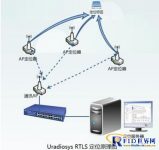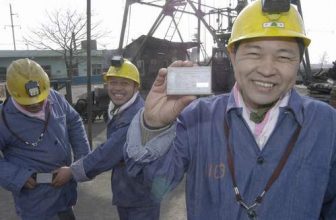
Case of “WiFi Downhole Personnel Positioning System” in an iron mine in Anhui
[ad_1]
With the rapid development of national economic construction, various industries have increasingly demanded resources such as coal and metals, and the situation of underground safety production is severe, facing greater pressure. Major mine disasters and casualties occur from time to time, and the lives of all types of underground operators are safe. It is seriously threatened, therefore, the underground personnel positioning system is particularly important.
Current problems with underground personnel positioning system
In recent years, large and medium-sized coal mines at home and abroad have successively completed the construction of underground personnel positioning systems, but traditional underground RFID, Zigbee and other positioning technologies have also exposed some problems.for exampleRFIDStrictly speaking, it is a set of attendance recognition system, not a positioning system in the true sense. Regional positioning is not cost-effective. The Zigbee positioning system has a low transmission rate and does not meet the needs of multiple services.
At present, most underground positioning systems have a single function and are dedicated to private networks. They cannot simultaneously meet the basic requirements of mining enterprises such as personnel positioning, mobile phone calls, real-time data transmission, and video monitoring. These are precisely the important guarantees for achieving safe underground production.
Repetitive construction of multiple systems makes the downhole system more expensive. How to improve the underground informatization level and improve the traditional underground personnel positioning and environmental monitoring mode, Anhui’s underground positioning project put forward their requirements to us, which is also a concern of all mining enterprises.
Upin Technology’s comprehensive underground mine solutions based on Wi-Fi wireless technology are directly tailored to address the above problems. Through the international standard IEEE802. 11 threat to achieve the integration of wireless communication, personnel positioning, environmental monitoring, wireless video surveillance and other services, while other solutions require the deployment of two or more networks.
Our advantage
Wide signal coverage: Wi-Fi coverage can reach 100 meters indoors and 300 meters to several kilometers outdoors.
High positioning accuracy: WiFi positioning accuracy can reach up to 3-5M, which fully meets the positioning requirements of underground ground.
The transmission speed is fast: it can reach 200Mb/sec, the latest standard supports the transmission rate of IGb/sec. Can support multiple channels of high-definition video, in line with the trend of information development.
Super cost-effective: The WiFi positioning system can be expanded to realize multi-service functions such as voice calls, video transmission, and sensing, with multiple functions in one network.
Simple networking: wireless terminals and positioning APs can meet positioning equipment, so that network resources can be shared in a wireless mode with the existing wired architecture, and the installation cost and complicated procedures are much lower than traditional wired networks.
Diversified terminals: diversified positioning terminals. In addition to traditional positioning tags, the system supports the positioning of smart terminals such as WiFi phones, notebooks, WiFi cameras, and iPADs to meet the needs of mobile services.
Rich experience: Positioning the first brand in the domestic WiFi market, more than 100 successful cases at home and abroad, and rich project experience.
System composition
The real-time positioning and monitoring system for underground personnel (Wi-Fi RTLS) consists of three parts: Wi-Fi Tag, Access Point, and Locating Server.

As shown in the figure above, the wireless local area network real-time positioning system is mainly composed of positioning tags, AP locators and back-end monitoring and management.
The heart (location server) consists of three parts:
1) WiFi location tag: the location tag is worn on each staff member as a wireless data collection module, and the system can track and locate personnel and vehicles by tracking the tag.

2) AP locator: adopts 2.4GHz frequency band, supports 802. llb/g/n mode, collects tag information in time, transmits it to the back-end monitoring center, and controls and manages downhole tag equipment. Each AP base station has an effective coverage of 100 meters underground, and the effective accuracy of the tag is 5 meters.

3) Positioning server: The monitoring and management center installed with the positioning server software system mainly realizes real-time data analysis and processing. Analyze and manage tag data, monitor and display the location of each field tag in time through the electronic map of the control center, the data can be stored in the storage database at the same time, and the monitoring personnel can access the storage server through the computer to query the location of the personnel.
The main function
◆ Real-time positioning: the visual interface displays the location of underground personnel on the map in the form of web, and moves in real time
◆ Query function: The system provides query by personnel; query by time; query by region; query by identification zone; query by overtime alarm; query by overcrowded alarm; query by restricted area; query by alarm for work abnormality; query by personnel classification; Query by department; query by type of work, etc.
◆ Statistical function: Provide various useful statistical data in the form of reports, such as various warning records of tags, personnel entry and exit records, operation history records, etc.
◆ Real-time alarm: When a dangerous situation occurs, underground workers can touch the label button for real-time warning, the system pops up a page, provides sound warning, and predicts the danger in advance
◆ Track playback: Play back the historical movement track of a specific person set as a target in a specific time period for various analysis purposes
◆ Alarm management: Manage the actual button alarms, disappear alarms, low-power alarms, cross-border alarms and other alarms, and provide follow-up response methods for various alarms, otherwise the alarm will be reminded until it is processed
◆ Attendance management: record the entry and exit time and stay time of each person who goes down the well, and form a complete intelligent attendance record from Lili
◆ Video linkage: When a dangerous situation occurs underground, the system immediately pops up a nearby camera, retrieves the image, and understands the scene dynamics in the shortest time
◆ System management: system maintenance, log query, data import, data export, data backup, and scalable implementation of data
◆ WiFi call: Use the underground WiFi signal to make high-quality WiFi calls without any cost, safe and reliable, and supports intercom, group call, SMS and other functions.
◆Environmental monitoring: In conjunction with environmental monitoring sensors, it can realize the monitoring of sensitive data such as the concentration of dangerous gas, wind speed, temperature and humidity in the well.
◆ Video transmission: Utilize the high bandwidth of WiFi network to realize the signal transmission of WiFi video
software interface

At present, Youpin’s WiFi underground intelligent personnel positioning system in Anhui is stable and reliable, and it is closely integrated with the original information system in the mine. It has solved many practical problems that have plagued them for many years. The innovation of this system The performance and practicality have been endorsed and highly affirmed by mine owners and industry peers!
[ad_2]




